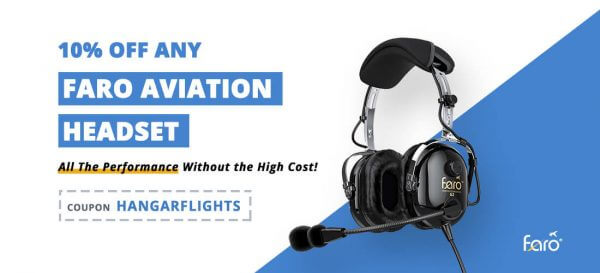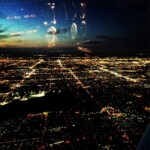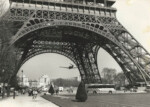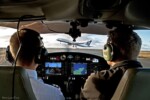Malfunctioning Airspeed in a Cirrus SR-22
14 January 2017 | Updated on February 05, 2024
The day began as normal as any. It was a Friday morning, and I went in to work. Part way through the morning a co-worker who is a private pilot informed me that he was going to “go for a quick lap around the pattern at around noon” and I was invited to go along.
Now, anybody who knows me personally knows that I am unable to turn down any excuse to go to the airport, much less to go for a ride in a Cirrus SR22.
I had never flown with this pilot before, but I had confidence in his abilities. And it didn’t hurt that he had also invited along his Instrument Instructor who has thousands of hours in Cirrus and is currently flying Lear 45s as his “day job”.
So off we go! I settle into the roomy (for such a small airplane) back seat and prepare to simply enjoy the ride. I have spent so much time working on my own flight training lately; it has been a very long time since I have simply been a passenger. I had my phone out ready to take pictures and videos as the high performance engine roared to life and we raced down the runway on a rapidly warming late summer afternoon. Rotate at 70 knots and away we go.
Within minutes we were at 8,500 feet and climbing somewhere near the Oklahoma/Kansas border. This took me by surprise, because even though I know the Cirrus is a fast airplane, I was not prepared for that level of performance. I spend all my time flying in a Cessna 150 – that trip would have taken hours (ok not really, but the 150 is slow).
It’s at about this time that I am looking at the instruments from the back seat, and not being very familiar with the Cirrus, I think to myself, “This is a fast airplane.. It seems like 120 knots airspeed is super slow..”
Almost at the same moment that I am thinking this, the pilot says, “Why are we flying so slow?…”
The instructor/friend leans over to take a look and says, “Hmm, I don’t know.”
*Thud* goes my stomach. Here I am in a strange airplane with pilots I have never flown with and an unknown problem. Stay calm, we have a ballistic parachute if we need it and there is nothing but empty fields below us, we will be just fine.
Now starts the troubleshooting. Look out the left window to confirm the cover was taken off the pitot tube. The airplane feels normal, it is performing normally, climbing and cruising just fine, and everything visually appears normal. But the airspeed is indicating about 30 knots below what “feels” right. It is climbing normally as well.
Pull the airplane into slow flight. Boom, there goes what remaining speed we have. Now we are hanging on the prop with the stall warning horn going off – airspeed indicating 40 knots. There is no way we are cruising in slow flight at 40 knots. (Stall speed for the Cirrus is 60 knots). Finally pull it back into a stall to test where the actual stall will happen, and sure enough, its about 30 knots indicated below where it should be. Put the power back in and begin to climb and accelerate. Again, everything feels normal, but the speeds we are indicating are obviously not correct.
Everyone’s first thought then is that perhaps we picked up a bug that clogged the pitot tube. Airpseeds were registering normal during takeoff and climbout though. What are the chances we picked up a bug at 8,000 feet? Plus, the pitot tube is obviously not completely clogged because we DO have airspeed indicated. It is just indicating incorrectly. Both airspeed indicators, on the G1000 glass panel as well as the steam gauge backup are indicating the same.
Now it becomes a matter of simply flying the airplane. So much of the flying in this airplane is done with a computer. Dial some numbers into the computer and away it goes. But now you can’t trust what is being told to you, so you have to revert back to simply flying the airplane by sight, feel, sound, and smell.
Next comes the mental math. The airplane is stalling at this speed. Winds are from this direction at this speed. Therefore when we land on this runway if the math is correct we should be indicating this speed.
At this point in time it is obvious that the airplane is not going to fall out of the sky or anything. Everything is performing as normal with exception of the airspeed indicator. But this is getting close to the critical moment in flight, landing, when airspeed is king. During the phases of landing managing airspeed is so important. Too fast and the landing could damage the airplane. Too slow and you could stall at a critical phase when you are too low to recover…
Coming in to land was a matter of looking outside and doing what looks and feels correct. Ignore what the instruments are telling you, because they are wrong. Thankfully the mental math had been correct and the numbers were almost exactly what they were estimated to be. The touchdown was smooth as butter, and you never would have known any different.
Upon getting out of the plane of course we all rush over to the pitot tube. Nothing. No obstruction. After having an A&P check it out it turns out the pitot line running inside the wing had split and was not holding pressure properly. Imagine trying to drink liquid through a straw that has a crack in the side. You will still get liquid through the straw, put the pressure and suction will be all wrong and significantly weaker than it should be.
Situations like this, although often times scary in the heat of the moment are such great learning experiences. Being able to observe the way three different pilots with three greatly varied levels of experience react to a situation, and watching the skillful adaptation to an unexpected situation teaches you to always expect the unexpected and be ready to adapt.
Never stop learning. Never stop improving. Never stop flying.
For more experiences like this, as well as informative articles and videos, check out www.aero360aviation.com
We hope you enjoy it!






























